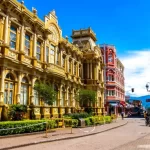Panama vs. Costa Rica: The Real Scoop II
Cost of Living
The cost of living in a particular country is in many cases the most important factor people consider when moving abroad. More often than not, they will select one country over another because it is more affordable or it offers more perqs. However, smart retirees should take a close look at the quality of life and lifestyle a country offers, not just the low cost of living, before making a choice; after all, cheap living is no fun if you are miserable doing it.
What a person can spend in any country depends their particular lifestyle. I know expats who have scraped by for less than$1,000 per month in Costa Rica; they live like many of the locals and manage to get by. (However, I don’t think many expat retirees from North America would be content to live their lifestyle!) On the other hand, I also know other expatriates who spend $1,000 or more weekly, because they can afford and enjoy all of the amenities that come with a more affluent lifestyle. In the end, the actual cost of living in Panamá or Costa Rica boils down to what one can afford to spend.

As one retiree living in Panama told me, “Coronado, Boquete, and El Valle de Anton are probably the three most expat-friendly, move-in-ready destinations in Panama, which of course makes them a lot more costly. Rent in Coronado and El Valle de Anton begins around $1,400 on the low end. In Boquete you’ll find homes advertised at $1,000 and up.”
Another expat said, “If you live in an apartment in Panama City or another lowland area, your electric bill can easily be as high as $200 to $300 per month. On the other hand, in cooler places like Volcan and Boquete, and even the mountain town that’s super close to Panama City, Cerro Azul, there’s a good chance you’d never need to run the air conditioner.”
In contrast most home in Costa Rica’s Central Valley have no air-conditioning or heat; they don’t need them because climate is nearly perfect. In fact, the town of Atenas bills itself as having the best climate in the world.
Here are a few links where you can check out and compare the approximate cost of living in Panama and Costa Rica:
The first link is from Numeo’s website. It features the approximate costa of living for many countries around the world: https://www.numbeo.com/cost-of-living/country_result.jsp?country=Panama
To quote Numbeo, “The cost of living in Panama is 3.57 percent lower than in Costa Rica (aggregate data for all cities, rent is not taken into account). Rent in Panama is 57.36 percent higher than Costa Rica (average data for all cities).”
Another source for the approximate cost of living in several areas that are popular with expats is: http://livinginpanama.com/living-in-panama/cost-of-living-coronado-el-valle-boquete/
And for more costs you can also check out: http://www.panamaforreal.com
Without a doubt, Panama’s major appeal to some potential retirees are the incentive programs available to them. Attractive discounts are offered for elderly Panamanian citizens and foreign residents in a wide range of areas: Importing an automobile tax-free every two years, a one-time exoneration of up to $10,000 in household goods importation duties, plus reduced prices on transportation, restaurants, doctor’s visits, entertainment and more. These programs are very appealing to anyone who wants to save money, especially to those who receive small pensions and must be cost conscious.
Costa Rica eliminated its exonerations on household goods, automobiles, and a few other perqs for retirees (pensionados) in 1992. The main reason was that the court said it was unconstitutional and discriminatory for foreign retirees to enjoy certain privileges that Costa Rican citizens could not. Nevertheless, this hasn’t stopped expats from flocking here. Some of the draws are the country’s stellar international reputation, unparalleled natural beauty, friendly people, excellent medical care, user friendliness for foreigners, which helps them feel confortable and fit right in, the year-round spring-like climate, and the unparalleled lifestyle with every imaginable activity to stay busy and happy.
As an article in International Living states, “It’s true Costa Rica doesn’t have an official retirement incentive program; it got rid of it in the 1990s. But Costa Rica does make it easy to qualify for residence. The pensionado program requires only income of only $1,000 a month from Social Security, a pension, or a similar source, per couple. The major benefit; you join Caja, the national healthcare system, and get all your medical needs covered for free after your small monthly payment. Plus, those over 65 can get discounts of 10% to 20% through the Golden Citizen (Tarjeta de Oro) program.”
Most people who relocate to Costa Rica are willing to give up the incentives the Panamanian government offers because they realize that the quality of life, locally known as the “pura vida” lifestyle, is so much better; there is much more to see and do and there are many more places from which to choose for living in Costa Rica.
Bottom Line: As International Living states in their Annual Global Retirement Index, “It’s true that Costa Rica isn’t the cheapest country we list, but it offers excellent ‘bang for your buck’.” In fact, Costa Rica is ranked #1 and Panama #3 according to IL’s research. To see their list go to: https://internationalliving.com/the-best-places-to-retire/
As in Part One of this series, this has been a look at some of the factors to consider when evaluating a retirement relocation. If you detect some bias on my part towards Costa Rica, I apologize. But, with many years of experience with both countries, and when I compare them fairly, it always comes out in favor of Costa Rica.
Stay tuned for Part Three which compares medical care and costs in both countries.



